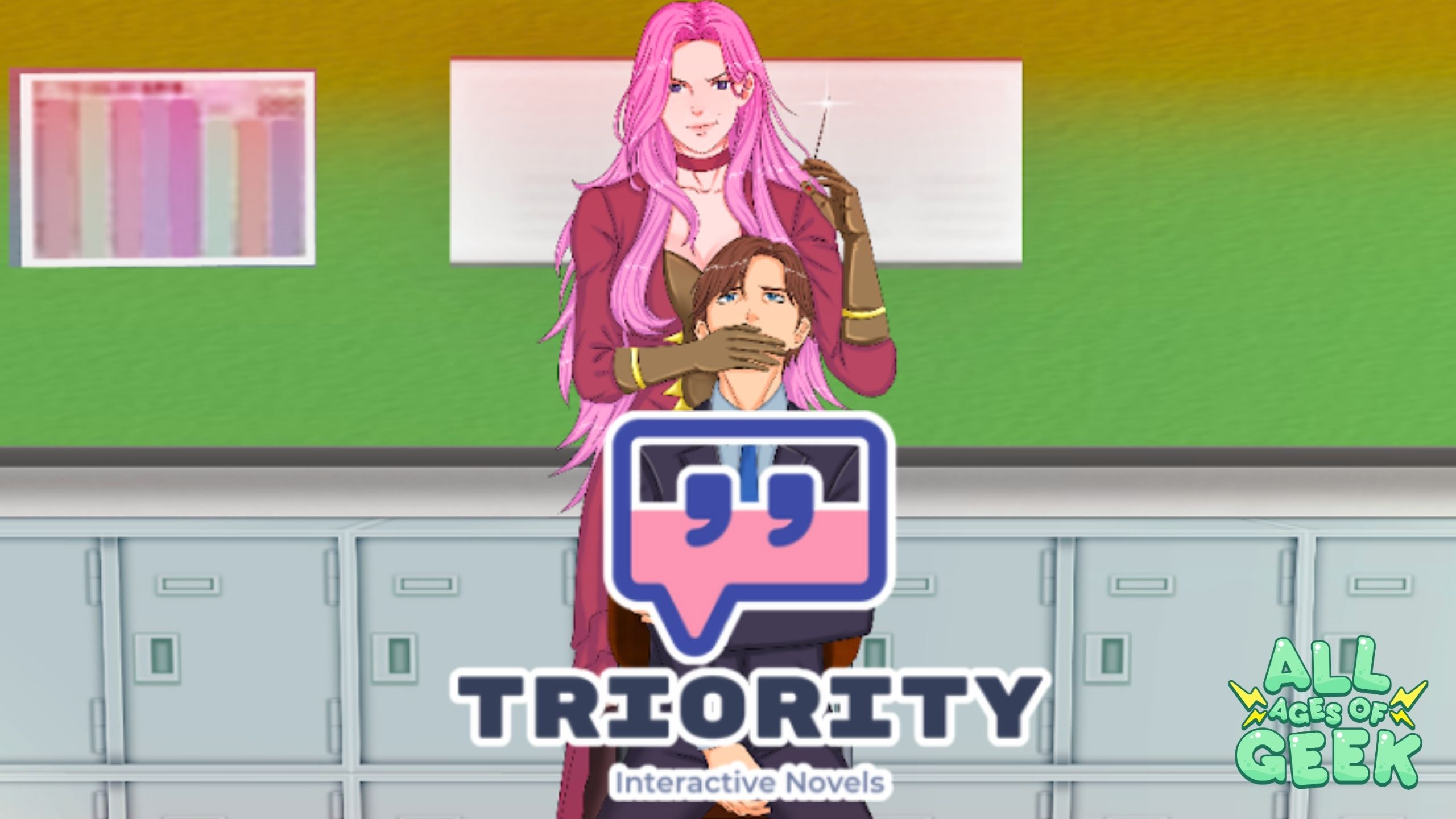by: Gen/Esis
You know, there are times when I complain about things that really don’t matter, and this might just be another one of those moments—but really, can someone explain to me who thought it’d be a good idea to interject a short story collection right after Unital Ring 1?
Don’t get me wrong, the stories are all interesting, but seeing the volumes go from Unital Ring 1 to Kiss and Fly and then Unital Ring 2 does something to my brain that I rather it not do.
But anyway, let me get started with this review…
Kiss and Fly is the twenty-second volume in the SAO series and was published on October 10th, 2019 (June 22, 2021, in the US). Like volumes 2 and 8, it’s a volume filled with short stories that take place at different points in time in the series. In this case, it’s a collection of bonus stories that once were exclusive to those who bought the limited-edition versions of the anime blu rays.
Those stories consist of:
— The Day Before
— The Day After
— Rainbow Bridge
— Sisters’ Prayer
As a whole, these stories don’t have a massive impact on the overall story of SAO but do give a little more insight into the world and characters that have appeared throughout the series. And for the most part, I’d say they are pretty solid reads.
So, without further to do, let’s get started with the first story:
The Day Before:
There is a lot of content that happens between the moment Kirito proposed to Asuna at the end of chapter 16 of volume 1 and where we next see them in chapters 17 and 18. Along with things like Sugary Days, which I hope gets officially translated one of these days, there’s Girl of The Morning Dew, and this story, The Day Before.
The story, as the name suggests, takes place during the day before they officially got married. It follows Kirito, Asuna, and (best girl) Argo, as they try to finish a quest so they can hopefully get back the Log Cabin Kirito promised Asuna they’d live in.
Mainly, however, the topic this story is tackling is Kirito’s feelings toward Asuna. Not knowing if his love for her is real or if he’s even capable of loving someone romantically in the first place. Having pushed everyone away for so long, he’s unable to cut through that doubt that lingers in his mind.
The Day Before might not be extravagant, but the pieces it adds to Kirito’s character are the true highlights
This story does its job well by also incorporating aspects of the story The Wonderful Wizard of OZ, although I’d argue it’s the weakest aspect of the story.
Obviously, this story takes into account that you already know everything about The Wonderful Wizard of OZ including the adventures that the Lion, the Tinman, and the Scarecrow, have gone through along with Dorothy.
Because of this, none of those characters feel fleshed out and their final moments which are supposed to be the payoff of the character development they’ve gone through falls pretty flat in this one.
While it works to get the theme of the short story across, it makes the quest feel pointless for the most part.
I did enjoy how Kirito had to practically be dragged around by Asuna and Argo this whole story while he internally tackled his thoughts. The fact the story of The Wonderful Wizard of OZ had practically been erased from his mind so he could remember game stuff is both just like Kirito and kind of sad in a way.
A lot of this story stems from Kirito’s loneliness. How his life before SAO had been him sheltering himself from the outside world and how that affected his life overall. This story is great in that regard, even if the plot itself is a little weak.
Overall, like most of Reki Kawahara’s works, the story is driven by its characters and this one accomplishes what it’s aiming to do in the short amount of time it has.
Also, I could be reaching, but it felt like Kawahara wanted to draw parallels between the three characters of The Wonderful Wizard of OZ and the three main characters of SAO, Kirito, Asuna, and Argo.
It wasn’t outright said in any way, but it was obvious that Kirito was like the Tinman, looking for a heart. Asuna was like the Lion, needed courage (Although that isn’t resolved until Mother’s Rosario). And finally, the info broker herself, Argo, who looks for knowledge of every corner of SAO, would be the Scarecrow looking for a brain.
Again, I might be reaching, but that’s what it felt like to me.
Now let’s move on to the next story:
The Day After:
This second short story, The Day After, takes place around five months after the end of Fairy Dance. While the first story only focused on Kirito, this one focuses on Asuna as she suffers from unexplainable dissociative episodes with her avatar and how she is entrusted with bringing resolution to Kirito.
Out of the four, this is one of the best.
This story, once again, is character driven and even brings further resolution to an older plot point. We get more nice moments between Kirito and Asuna, revelations of the Cardinal System, and more explanations of past, and future, events.
Asuna in this story is in the process of recovering after the events of both Aincrad & Fairy Dance. Because of this, the sweet moments she has with Kirito feel ever more special, and her longing for the world that is now behind her (the time she spent with Kirito in the log cabin) feels stronger to her as she acclimates to her new reality.
Unlike the first story, the plot for this one revolves entirely around the character moments with little of anything else in the background—except for a boss fight that isn’t emphasized much—and to me that’s for the better.
This story shines in the quiet moments between Asuna’s newfound family of Kirito and Yui. How Asuna feels as all the time in Aincrad and the events of Fairy Dance start to drift away. The added emotional ties with one of my favorite SAO short stories, Red Nose Reindeer. This is what makes this story work.
Even if most of the story relies on dialogue, there isn’t a boring moment here.
Actually, it’s the action that I’d say was the weakest part.
Thankfully there’s not a lot of it, but the action here feels pretty meaningless—mostly because it is. That’s an issue I have with a lot of these short stories, not just in this book, but like with things in Caliburn, where the fights don’t have any weight to them.
Understandably, these stories are mostly of kids playing video games, so there’s little meaning that has to be derived from them (Which is why the monster fights in Aincrad’s short stories feel stronger). And in this short story, the fight feels drawn out a bit since it doesn’t really matter. At most, it’s to show a moment of Asuna’s condition getting in the way of her overall experience, but the scenes could’ve really been cut short and there would be no impact on the story.
Other than that, there is little to complain about here.
We get moments that are nice to see after being skipped entirely in the main series, deeper dive into how the system of the world works, and a resolution to some aspect of Kirito’s character.
And now next to the next short story, and the weakest one in my opinion:
Rainbow Bridge:
Taking place a month after the last short story, Rainbow Bridge is a sequel to an anime original movie called Sword Art Online: Extra Edition. The choice to write a sequel to something that isn’t novelized would surprise me if it wasn’t for the fact that Kawahara has done it before when he canonized Ordinal Scale and included details of it in Unital Ring.
Personally, I don’t know how good of a choice that is, but I guess it does make people have to have watched the anime to understand what was going on.
However, while I felt that Extra Edition had potential but was squandered by how the anime was made, this short story feels overly pointless. And it almost shares the same problems that I had with the Caliburn short story in volume 8 (although I still prefer that one over this).
Apart from a single mention of Kirito’s longing for a different world, which would be later expanded upon in Alicization, there isn’t much in terms of character in this one. There’re interactions between characters, but none of it feels like anything more than a side mission that holds no real weight.
The Pillager of The Deep quest line has a chance of being interesting, but with all developments happening in short stories and badly made movies, it’s hard to be invested in any of it. There are better examples of Kawahara having the time to fully flesh out quest lines like with the Elf War in Progressive but this one feels more like he was told to write a story for a movie that he didn’t want to make.
None of the NPCs feel like proper characters and not even the characters seem too interested either.
At most, it seems like Kirito just wants to solve things for Leafa’s sake. And from Leafa’s side, there isn’t much emotional attachment to the quest in the first place, apart from her wish to see the rainbow bridge (which is the Bifrost) due to her love for mythology.
The only true development here is the obtained special weapon Crest of Yggdrasil—the staff Asuna uses from that moment onward. It was the topmost branch of the World Tree, making it a rare item in the overall landscape of ALO.
A bit of symbolism could be drawn from the rainbow bridge near the end as it seems to represent the vastness of the worlds that still lie ahead for the main crew (Based on the fact that the Bifrost connects the nine realms) but apart from that, there isn’t much to talk about either plot or character-wise.
(There is a cute scene between Kirito and Klein that I appreciated though)
And finally, we reach the short story that I was most excited about in this collection:
Sisters’ Prayer:
A heartbreaking but heartwarming tale—that’s the only way I could really describe it.
Sisters’ Prayer takes place in May of 2024, about six months before SAO was cleared. But this story has little to do with SAO. Instead, it’s all about Yuuki and Aiko, the twins in terminal care enjoying their life in a virtual hospice.
By this point, Yuuki and Aiko are alone. Their parents have passed away and their having no other friends meant that they relished in only each other’s company, as they had for most of their lives. That is until a lucky encounter with a rare beetle led to them meeting a girl by the name of Merida—another patient at the virtual hospice.
This story, as warm as it is, has an underlying tragedy that lingers throughout.
To them, this world is but a means to live a life, even if not entirely real, it allows them to have fun in different worlds and have experiences they otherwise couldn’t have due to their health. It portrays the technology that we’ve been shown time and time again to be dangerous at its utmost best.
To me, everything about this story is executed perfectly.
The characters, the themes, the scenery, everything just…works.
The plot is simple but highly effective.
It’s nothing more than the story of three girls spreading their wings so they can experience things they never had before. To regain some of those experiences they lost when becoming terminally ill. To find meaning in a life that has little left to live.
Like with Mothers’ Rosario, this story is Kawahara doing what he does best. A fully character-driven narrative with one absolute goal in mind—portraying the creation of the Sleeping Knights.
A story forged with pain and hope.
The three main characters each have their own means of living. Even the twins who’ve suffered through the same trials and tribulations have entirely different outlooks on life, and what it means to be so close to the end of it.
This story serves as a perfect backstory to the courageous girl who hands over everything she learned to Asuna sometime later. Elevating what was already one of the best SAO stories to date to an even higher level.
It genuinely makes me wish this was adapted into the anime in some way, but who knows if A1-Pictures would ever be up to the task.
This story also shows off another game that we’ve heard of before but never actually seen—Asuka Empire. Although not as fleshed out as the other games like SAO, GGO, and ALO, to me it feels like a very interesting setting that I wish we could get more about. Taking place in an old Japanese time frame, it has a very special aesthetic I feel would fit nicely with the overall worlds.
(There is an Alternative version of SAO that takes place in that game, but the series doesn’t seem to have been too popular and has never been translated into English)
I could keep gushing about this short story, but instead, I rather leave it there. Compared to the other ones, this one flew right passed as I read. Every moment was an enjoyable read, and the last few chapters take a turn that I quite frankly didn’t expect.
Either way, this story is just…beautiful.
And that’s volume 22 of Sword Art Online—Kiss and Fly.
While to me, I can’t very much say it’s my favorite of the short story collections, the winner still being volume 2, Sisters’ Prayer alone makes every moment of this book worth it.
Although the stories aren’t necessary in any real way, experiencing them truly adds to the world and universe these characters inhabit. It makes every arc and character feel deeper than before, and it gives better context for scenes that you might’ve not even thought you needed more of.
My ranking of the stories would be:
1. Sisters’ Prayer
2. The Day After
3. The Day Before
4. Rainbow Bridge
Overall Score: 7.5










